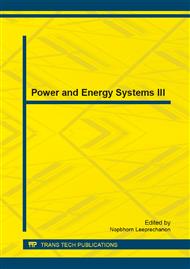[1]
W. Mo, G. Deng, F. Luo, Titanium metallurgy, in, Beijing: Metallurgical Industry Press, 1998, pp.281-332.
Google Scholar
[2]
H. Li, S.M. Oppenheimer, S.I. Stupp, D.C. Dunand, L.C. Brinson, Effects of pore morphology and bone ingrowth on mechanical properties of microporous titanium as an orthopaedic implant material, Materials Transactions, 45 (2004) 1124-1131.
DOI: 10.2320/matertrans.45.1124
Google Scholar
[3]
X. NIE, L. DONG, C. BAI, D. CHEN, G. QIU, Preparation of Ti by direct electrochemical reduction of solid TiO2 and its reaction mechanism, Transactions of Nonferrous Metals Society of China, 16 (2006) s723-s727.
DOI: 10.1016/s1003-6326(06)60288-4
Google Scholar
[4]
G.Z. Chen, D.J. Fray, T.W. Farthing, Direct electrochemical reduction of titanium dioxide to titanium in molten calcium chloride, Nature, 407 (2000) 361-364.
DOI: 10.1038/35030069
Google Scholar
[5]
R.O. Suzuki, Calciothermic reduction of TiO2 and in situ electrolysis of CaO in the molten CaCl2, JPCS, 66 (2005) 461-465.
DOI: 10.1016/j.jpcs.2004.06.041
Google Scholar
[6]
I. Park, T. Abiko, T.H. Okabe, Production of titanium powder directly from TiO2 in CaCl2 through an electronically mediated reaction (EMR), JPCS, 66 (2005) 410-413.
DOI: 10.1016/j.jpcs.2004.06.052
Google Scholar
[7]
F. Endres, Ionic liquids: solvents for the electrodeposition of metals and semiconductors, ChemPhysChem, 3 (2002) 144-154.
DOI: 10.1002/1439-7641(20020215)3:2<144::aid-cphc144>3.0.co;2-#
Google Scholar
[8]
M. Ueda, H. Kigawa, T. Ohtsuka, Co-deposition of Al-Cr-Ni alloys using constant potential and potential pulse techniques in AlCl3-NaCl-KCl molten salt, Electrochim Acta, 52 (2007) 2515-2519.
DOI: 10.1016/j.electacta.2006.09.001
Google Scholar
[9]
M. Jafarian, M.G. Mahjani, F. Gobal, I. Danaee, Effect of potential on the early stage of nucleation and growth during aluminum electrocrystallization from molten salt (AlCl3-NaCl-KCl), J Electroanal Chem, 588 (2006) 190-196.
DOI: 10.1016/j.jelechem.2005.12.028
Google Scholar
[10]
T. Jiang, M.J. Chollier Brym, G. Dubé, A. Lasia, G.M. Brisard, Electrodeposition of aluminium from ionic liquids: Part II-studies on the electrodeposition of aluminum from aluminum chloride (AICl3)-trimethylphenylammonium chloride (TMPAC) ionic liquids, Surf Coat Technol, 201 (2006).
DOI: 10.1016/j.surfcoat.2005.12.024
Google Scholar
[11]
T. Jiang, M.J. Chollier Brym, G. Dubé, A. Lasia, G.M. Brisard, Electrodeposition of aluminium from ionic liquids: Part I-electrodeposition and surface morphology of aluminium from aluminium chloride (AlCl3)-1-ethyl-3-methylimidazolium chloride ([EMIm]Cl) ionic liquids, Surf Coat Technol, 201 (2006).
DOI: 10.1016/j.surfcoat.2005.10.046
Google Scholar
[12]
G. Yue, S. Zhang, Y. Zhu, X. Lu, S. Li, Z. Li, A promising method for electrodeposition of aluminium on stainless steel in ionic liquid, AlChE J, 55 (2009) 783-796.
DOI: 10.1002/aic.11698
Google Scholar
[13]
J.Z. Yang, Y. Jin, Y.H. Cao, L.X. Sun, Z.C. Tan, Studies on Electrochemical Stability of Room Temperature Ionic Liquids, CHEMICAL JOURNAL OF CHINESE UNIVERSITIES-CHINESE EDITION-, 25 (2004) 1733-1735.
Google Scholar
[14]
G.Z. Chen, D.J. Fray, Voltammetric studies of the oxygen-titanium binary system in molten calcium chloride, JElS, 149 (2002) E455.
DOI: 10.1149/1.1513985
Google Scholar
[15]
D.J. Fray, Emerging molten salt technologies for metals production, JOM Journal of the Minerals, Metals and Materials Society, 53 (2001) 27-31.
DOI: 10.1007/s11837-001-0052-5
Google Scholar
[16]
M. Ma, D. Wang, W. Wang, X. Hu, X. Jin, G.Z. Chen, Extraction of titanium from different titania precursors by the FFC Cambridge process, JAllC, 420 (2006) 37-45.
DOI: 10.1016/j.jallcom.2005.10.048
Google Scholar
[17]
G.Z. Chen, E. Gordo, D.J. Fray, Direct electrolytic preparation of chromium powder, Metallurgical and Materials Transactions B, 35 (2004) 223-233.
DOI: 10.1007/s11663-004-0024-6
Google Scholar
[18]
C. Tiyapiboonchaiya, D.R. MacFarlane, J. Sun, M. Forsyth, Polymer - in - ionic - liquid electrolytes, MmCP, 203 (2002) 1906-(1911).
Google Scholar
[19]
S. Wang, Y. Li, Reaction mechanism of direct electro-reduction of titanium dioxide in molten calcium chloride, J. Electroanal. Chem., 571 (2004) 37-42.
DOI: 10.1016/j.jelechem.2004.04.010
Google Scholar


